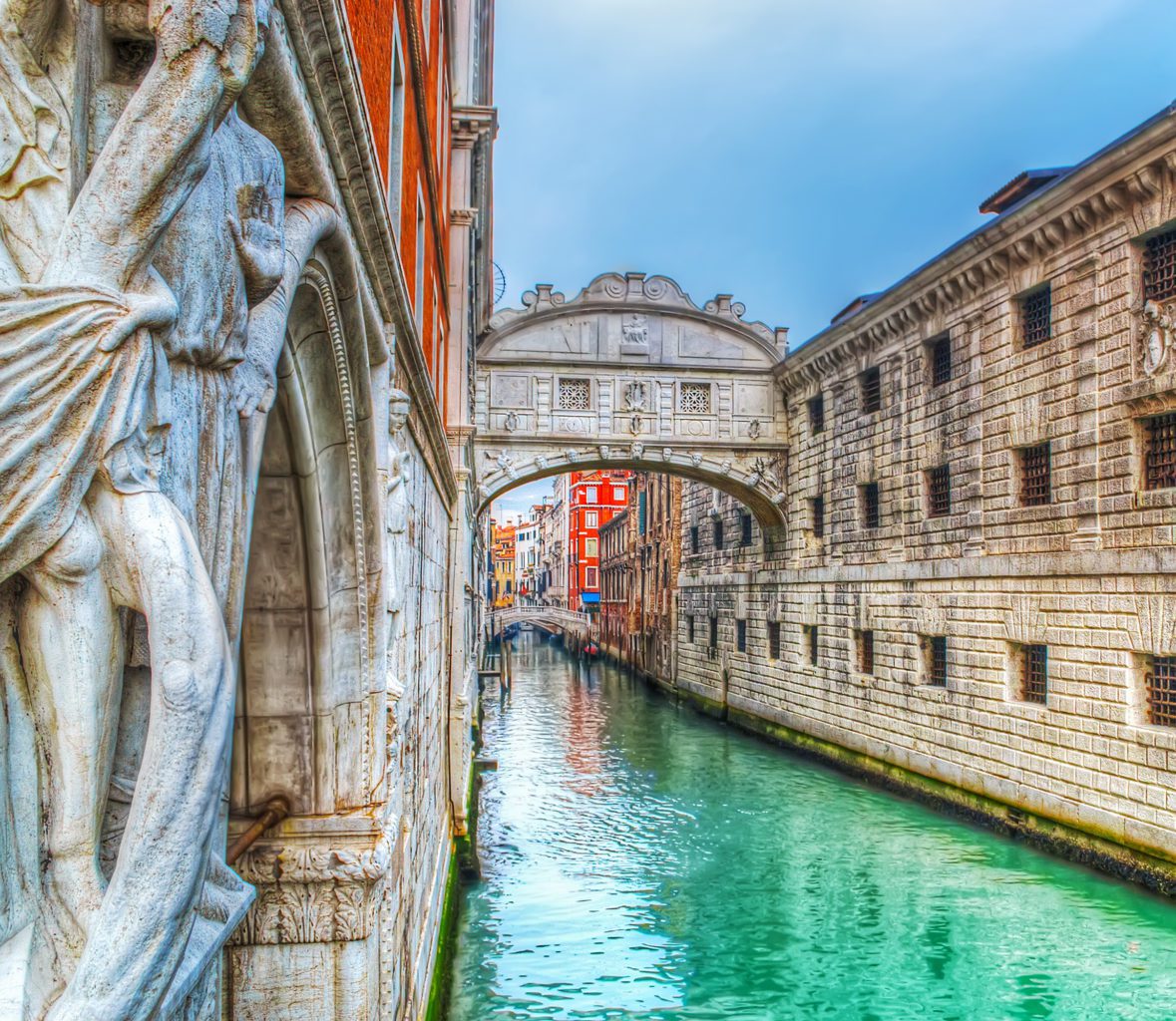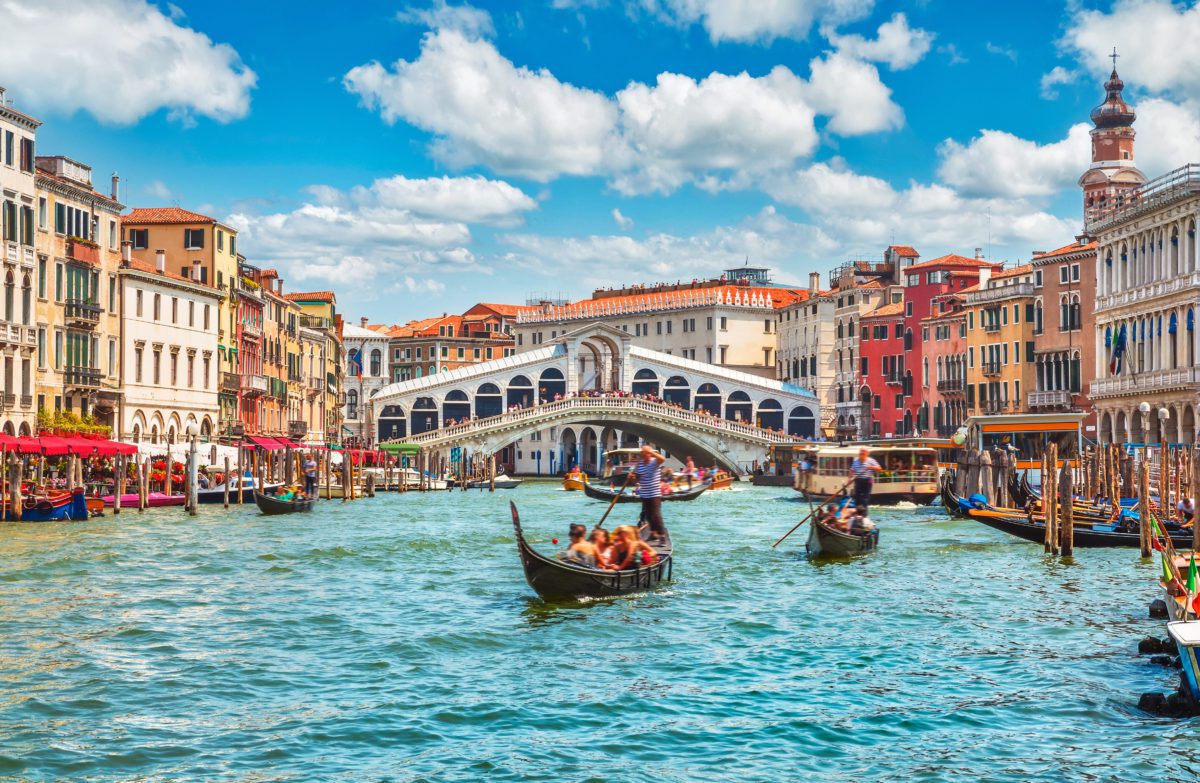We hear lots of reasons why we shouldn’t go to Venice. It’s too touristy. Too crowded.Too pricey … plus, it’s sinking. Down nine inches in 100 years. (Ironically, during that time, Venice’s average sea level has risen a foot.) So, does anyone go to Venice anymore?
Yes! The town still stays very busy, depending on the time of the year, and despite the fact that big cruise ships are no longer allowed on the Grand Canal and day passes are being somewhat regulated. In Italy, Rome gets the most visitors – but Venice is No. 2.
Stretching across 120 islands in the Venetian Lagoon, much of the “Floating City” is actually built on thousands of 60-foot wooden pilings, now petrified, driven deep into the seabed.
And oh, what a city. The architecture, the history, the art, all enveloped in an elegant, un-hurried ambiance hemmed by canals and alleyways romantic enough to get lost in. Benvenuto a Venezia.

Venice is best seen from the water. Indeed, this is by design. The facades of many of the city’s most beautiful palaces are only visible in acqua; there are no footpaths along the Grand Canal.
Even the principal face of Doge’s Palace looked out onto the lagoon for 100 years until a formal frontage was finally built on the other side, facing the extraordinary Marciana Library and the Piazzetta, which feeds into St. Mark’s Square. Get onto the canals by way of water taxis, water buses, traghetti (ferries, plural of traghetto) and, of course, one of the city’s 400 black gondolas.
When you’re back on terra firma, you’re on foot. There’s no land-based mass transit. Thankfully, this enchanting city of 150 canals and 400 bridges is compact and easily walked.
In 1812, romantic poet Lord Byron wrote of the city’s Bridge of Sighs in Childe Harold’s Pilgrimage and the Small Faces sang about it in Itchycoo Park in 1967. The bridge is actually an enclosed, 400-year-old limestone structure above the Rio di Palazzo, connecting Doge’s Palace and a prison. The sighs are those of the condemned being led to jail, seeing the outside world through the bridge’s tiny windows for the last time.

The wide Rialto bridge, built in 1590, spans the Grand Canal supported by 12,000 wooden pilings. Its central walkway is bordered by small shops selling souvenirs, leather goods, Murano glass and linens. Only four bridges cross the Grand Canal. Most locals take traghetti.
Small, inviting family restaurants and shops are here and there, tucked into neighborhoods surrounding the Rialto. Most bars offer small bites called cicchetti: rounds of Italian bread topped with gorgonzola, porchetta or baccala. Chase them with the city’s signature drink, the Spritz Veneziano, made with prosecco, Campari (or Aperol) and sparkling water.
The soul of Venice is her art. Ca’ Pesaro International Gallery of Modern Art features works by Auguste Rodin, Medardo Rosso and Gustav Klimt. Down along the Grand Canal, the Gallerie dell’Accademia houses arguably the best Renaissance-era artwork in the city, including Leonardo da Vinci’s famous study of anatomical proportions, Vitruvian Man.
For works by the likes of Pablo Picasso and Jackson Pollock, head to the Peggy Guggenheim Collection, presented as the influential American art collector/socialite instructed, in her spacious home, the 18th-century Palazzo Venier dei Leoni on the Grand Canal.

Walk over to the Basilica di San Marco and St. Mark’s Campanile. Take in the Museum of 18th-Century Venice, known as Ca’ Rezzonico, and pause a minute to appreciate the historic clock tower, the Torre dell’Orologio, on St. Mark’s Square.
High season is late spring and summer. Go in February and catch Carnevale. Stay at the Novecento Boutique Hotel, between St. Mark’s Square and the Accademia Gallery. Gritti Palace on the Grand Canal is also very nice.






















